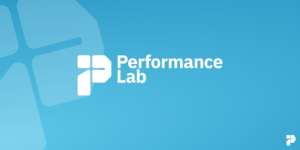WordPress, renowned for its flexibility in website creation, grants users unparalleled control over installations and configurations. Central to this control is the .htaccess file—a potent configuration tool in the WordPress arsenal.
Understanding the .htaccess File in WordPress
The .htaccess file, a linchpin of WordPress configuration, empowers users to toggle features, effect directory-based configuration changes, and serves as the default conduit for redirections and permalink structures. Nestled within the website’s root directory, this file, although typically auto-generated, might require manual creation in certain scenarios.
Plugins frequently harness the .htaccess file for seamless operation. From caching to fortifying security measures, plugins often wield the file to streamline website functionality.
Leveraging the .htaccess File: Essential Functions
Custom Error Page Redirections
Navigate common WordPress errors gracefully by directing visitors to custom error pages, safeguarding SEO integrity and user experience.
Index File Management
Exercise control over the default index file, tailoring website URLs to preferred formats, or eliminating index files altogether—a strategy favored by major websites for optimization.
Password Protection
Bolster website security by password-protecting sensitive files, mitigating unauthorized access risks and ensuring data integrity.
Caching Optimization
Enhance website performance via cache management, expediting load times and optimizing user experience with strategic cache expiration timers.
Access Restriction
Safeguard website integrity by blocking specific IP addresses or even entire countries, curtailing spam bot intrusions and bolstering GDPR compliance efforts.
Locating the .htaccess File: Unveiling Its Mysteries
While typically residing within the root directory, the .htaccess file may remain elusive due to system settings or inadvertent deletions. Ensuring visibility of hidden files within the FTP client is imperative for seamless file management.
Safely Crafting and Editing .htaccess in WordPress
Generating the .htaccess File: Effortless Methods
Harness WordPress’s permalink structure settings to effortlessly spawn the .htaccess file, bypassing the need for manual intervention.
Editing the .htaccess File: A Delicate Balance
Navigate the realm of .htaccess edits with caution, employing either plugins or direct file manipulation. Plugins like the Htaccess File Editor streamline the process, offering error detection and backup functionalities.
Manual Intervention: cPanel Chronicles
For purists, manual .htaccess edits via cPanel offer a direct approach devoid of plugin dependencies. However, meticulous attention to code accuracy is paramount to avoid inadvertent errors.
Navigating .htaccess FAQs: Demystifying Common Queries
Do I Need to Edit .htaccess?
While optional, .htaccess edits can optimize website functionality. However, novices should tread cautiously, prioritizing plugin-based solutions or professional assistance.
Can Theme File Editor Manipulate .htaccess?
No, the Theme File Editor operates exclusively within theme files, rendering it unsuitable for .htaccess modifications.
Expanding Horizons: Additional Plugins
Beyond the Htaccess File Editor, plugins like WP Htaccess Control and Yoast SEO offer comprehensive .htaccess management capabilities, catering to diverse user preferences.
.htpasswd: A Symbiotic Companion
Complementing .htaccess, the .htpasswd file facilitates directory password protection, synergizing with its counterpart to fortify website security.
Empower Your Website with .htaccess Mastery
While not indispensable, mastering .htaccess empowers WordPress users with unparalleled customization and optimization capabilities. Whether via plugins or manual intervention, wielding the .htaccess file unlocks a realm of website refinement possibilities.
Embrace the journey toward .htaccess proficiency and witness your website ascend to new heights of performance and security.




